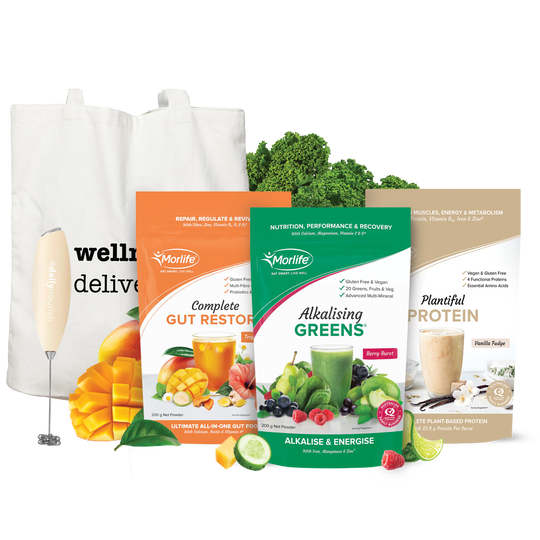6 easy ways to boost your fibre
Fibre: Are you getting enough?
We have all heard that you need to eat enough fibre to keep you regular, and it’s true, adequate dietary fibre is essential for the proper functioning of the gut (NMRC 2006) but do we really know what adequate means? And are we doing enough to ensure we do get enough each day?
The NHMRC (2006) sets the Adequate Intake (AI) guideline for dietary fibre as 30g/day for males and 25g/day for females however, in a 1995 study, the Australian Bureau of Statistics found the Australian average daily intake for fibre to be only 23.1g for males and 20.3g for females. So with numbers like that, it’s safe to say most people are not getting enough fibre in their diet.
So what does that mean?
With the gastrointestinal tract functioning as both a means to gain nutrition and eliminate waste, it’s important to ensure its working well.A poorly functioning system has been attributed to constipation, overgrowth of harmful bacteria, flatulence, a build-up of metabolic waste, greater exposure to toxins and inflammation. One of the key solutions however is dietary fibre, as “dietary fibre is the most effective treatment for all forms of constipation” and its consequences due to its influence on faecal bulk and consistency (NHMRC 2006).
What should you do?
Some simple solutions to increase your daily fibre intake include
- Add traditional nuts and seeds to your meals or as a snack during the day
- Replace white refined breads with wholemeal breads (where white flour isn’t the first ingredient)
- Boost your daily intake of whole fruits and vegetables ( juicing reduces/removes the fibre so juices don’t count)
- Eat breakfast cereals that contain whole grains
- Add beans and legumes to your meals
- Supplement your diet with popular superfoods like Chia Seeds, Psyllium Husk and Inulin. Or for an even easier option that you can simply add to food or smoothies, try our comprehensive Fibre Klenz boosting powder!
Everyday Sources of Dietary Fibre (Average dietary fibre content per 100g)
| Chia Seeds | 34g |
| Flaxseeds (meal is best) | 27g |
| Kidney Beans | 25g |
| Barley | 16g |
| Mung beans | 16g |
| Dessicated coconut | 16g |
| Almonds | 13g |
| Chickpeas | 12g |
| Sesame Seeds | 12g |
| Lentils | 11g |
| Buckwheat | 10g |
| Dried figs | 10g |
| Quinoa Grain | 7g |
(Averages in table data sourced from The National Agricultural Library n.d.)
References
Australian Bureau of Statistics 1995, National Nutrition Survey: Nutrient Intakes and Physical Measurements, Table 9. Mean Daily Energy, Moisture and Macronutrient Intake: Persons Aged 19 Years and Over, pp. 28, viewed 11 September 2014, http://www.ausstats.abs.gov.au/ausstats/subscriber.nsf/0/CA25687100069892CA25688900268A6D/$File/48050_1995.pdf
National Health and Medical Research Council (NHMRC) 2006, Nutrient Reference Values for Australia and New Zealand: including Recommended Dietary Intakes, pp. 45-49, viewed 11 September 2014, https://www.nhmrc.gov.au/guidelines/publications/n35-n36-n37
The National Agricultural Library n.d.,National Nutrient Database for Standard Reference , Release 27, United States Department of Agriculture, viewed 16 September 2014, http://ndb.nal.usda.gov/ndb/











